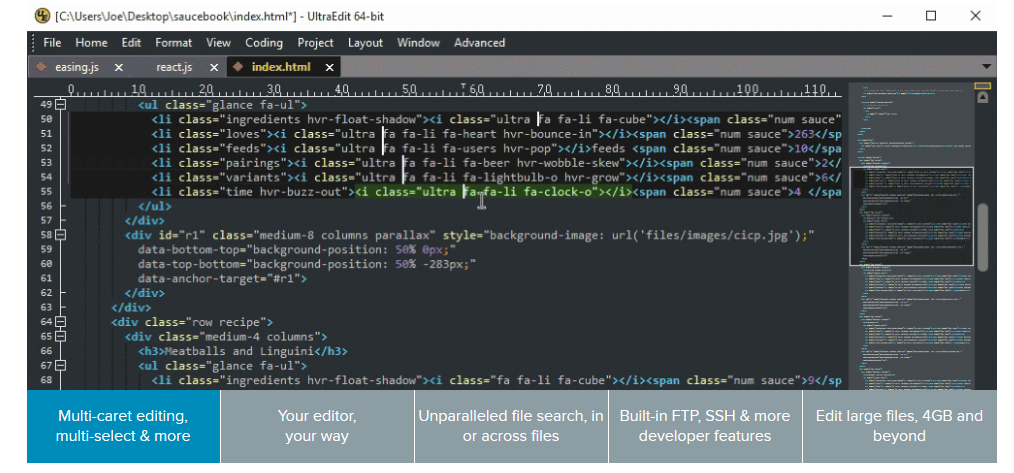

Restart Apache for the new file to be read: sudo apachectl restart Then open another Apache config file and uncomment another file: sudo nano /etc/apache2/extra/nfĪnd uncomment: Include /private/etc/apache2/users/*.conf Save all your changes (Control + O in nano) LoadModule php7_module libexec/apache2/libphp7.soĪnd also uncomment this configuration file also in nf - which allows user home directories. (Mentioned also in the PHP part of the article). While you have this file open also to get php running, uncomment the below. Open the main nf and allow some modules: sudo nano /etc/apache2/nfĪnd make sure these modules are uncommented (the first 2 should already be on a clean install): LoadModule authz_core_module libexec/apache2/mod_authz_core.so LoadModule authz_host_module libexec/apache2/mod_authz_host.so LoadModule userdir_module libexec/apache2/mod_userdir.so LoadModule include_module libexec/apache2/mod_include.so LoadModule rewrite_module libexec/apache2/mod_rewrite.so Permissions on the file should be: -rw-r-r- 1 root wheel 298 Jun 28 16:47 nf Options Indexes MultiViews FollowSymLinks
#Top php for mac code#
Then add the content below swapping in your ' username' in the code below, there is a slightly different user directive for Big Sur and Catalina, make sure 'Require host localhost' is used: Launch Terminal, (Applications/Utilities), and follow the commands below, first one gets you to the right spot, 2nd one opens the text editor on the command line (swap ' username' with your account's shortname, if you don't know your account shortname type ' whoami' the Terminal prompt): cd /etc/apache2/users sudo nano nf
#Top php for mac free#
If you would rather edit config files in a text editor as an app I would suggest text editor like the free BBEdit which allows you to open hidden system files.

conf, its location and permissions/ownership is best tackled by using the Terminal, the text editor ' nano' would be the best tool to deal with this. If you don’t already have one (very likely), then create one named by the short username of the account with the suffix. You have to make a few additional tweaks to get the ~/Sites folder back up and running.Īdd a “nf” filed under: /etc/apache2/users/ Make that folder before you set up the user configuration file described next. Once you make the Sites folder you will notice that it has a unique icon which is a throwback from a few versions older. You need to make a " Sites" folder at the root level of your account and then it will work. This takes a bit longer to set up but some users are very accustomed to using it. The other web root directory which is missing by default is the ' ~/Sites' folder in the User account. The files are shared in the filing system at - /Library/WebServer/Documents/ User Level Root the default system document root is still found at. It is easier to use the user level one as you don't have to keep on authenticating as an admin user.

It seems there is less effort from Apple in continuing with the user level one but it still can be set up with a couple of extra tweaks in configuration files. Document Rootĭocument root is the location where the files are shared from the file system and is similar to the traditional names of ' public_html' and ' htdocs', macOS has historically had 2 web roots one at a system level and one at a user level - you can set both up or just run with one, the user level one allows multiple accounts to have their own web root whilst the system one is global for all users. This will give you an indication of what might be wrong. If you don't get the localhost test, you can try troubleshooting Apache to see if there is anything wrong in its config file by running apachectl configtest The Apache version that comes in macOS Big Sur is Apache/2.4.46Īfter starting Apache - test to see if the webserver is working in the browser - you should see the "It Works!" text. To start Apache web sharing sudo apachectl start
#Top php for mac password#
Using the prefix of sudo is required for commands that have their applications protected in specific folders - when using sudo you will need to confirm with your admin password or iCloud password if set up that way. This needs to be done in the Terminal which is found in the OS filing system at /Applications/Utilities/Terminalįor those not familiar with the Terminal, it really isn't as intimidating as you may think, once launched you are faced with a command prompt waiting for your commands - just type/paste in a command and hit enter, some commands give you no response - it just means the command is done, other commands give you feedback. Web serving is built into Big Sur with Apache app, it is installed ready to be fired up.


 0 kommentar(er)
0 kommentar(er)
